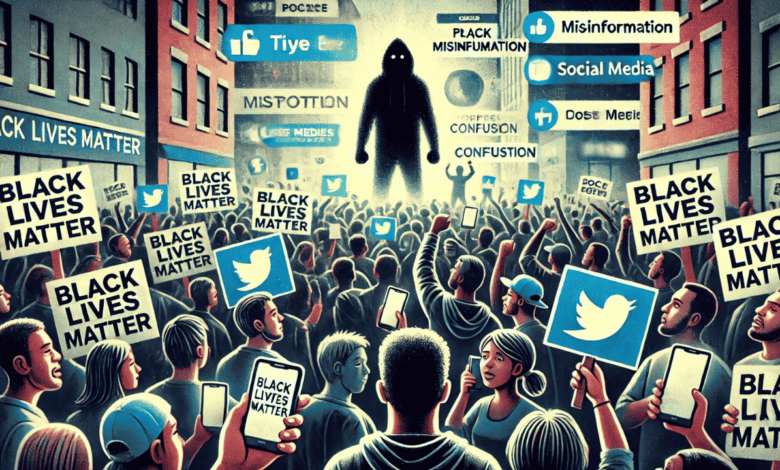The Truth About Ethan Clieon BLM Riots: Unpacking Misinformation

The 2020 Black Lives Matter (BLM) protests, sparked by the tragic death of George Floyd, were among the most significant social justice movements in history. They ignited global conversations about systemic racism, police reform, and equality. However, amidst these powerful demonstrations, misinformation began to circulate online, and one of the names that emerged was Ethan Clieon. This article aims to uncover the truth about the term Ethan Clieon BLM riots, explore the spread of misinformation, and discuss its implications.
Who Is Ethan Clieon?
One of the most striking aspects of the Ethan Clieon BLM riots keyword is the lack of credible evidence linking this name to any actual person or event. Searches and investigations into this name reveal no verifiable public records, official statements, or reliable news sources identifying Ethan Clieon as an exact figure in the BLM protests.
Instead, this term appears to be part of a broader wave of misinformation that spread during the protests. Social media platforms often became breeding grounds for unverified claims, sensationalized stories, and fabricated narratives. The case of Ethan Clieon is a prime example of how a baseless name or term can gain traction and distract from critical social issues.
The Role of Misinformation in Social Movements
Misinformation during social movements can have a profound impact. The 2020 BLM protests, despite being predominantly peaceful, were frequently misrepresented. False claims about individuals, events, and actions were widely shared, often intending to delegitimize the movement or shift the narrative away from its central message: racial justice and equality.
How Ethan Clieon Fits Into This Pattern
The inclusion of Ethan Clieon in discussions about the BLM riots reflects a broader strategy to create confusion and distract from the core issues. By spreading unverified names or incidents, misinformation campaigns aim to:
- Dilute public attention: Divert focus from systemic issues and policy reforms.
- Undermine credibility: Cast doubt on the legitimacy of peaceful protests.
- Sow division: Exploit social tensions and amplify political divides.
The Broader Impact of Misinformation During the BLM Protests
The BLM protests were significant not just for their scale but also for the global discussions they inspired about systemic racism. However, misinformation posed several challenges to the movement:
- Eroding Trust: False claims, like those associated with “Ethan Clieon,” eroded public trust in credible sources and diverted attention from real stories of injustice.
- Polarizing Communities: Misinformation fueled division by portraying protests as violent or chaotic despite overwhelming evidence that most demonstrations were peaceful.
- Distracting From Reform Efforts: Public and media attention shifted away from policy reforms and systemic change by focusing on fabricated stories.
What Happened During the BLM Protests?
The BLM protests were a direct response to the systemic inequalities faced by Black communities, particularly concerning police brutality. Some key outcomes of the demonstrations include:
- Policy Changes: Many cities and states implemented police reform measures, such as banning chokeholds, increasing transparency, and establishing civilian oversight boards.
- Global Solidarity: Protests inspired similar movements worldwide, addressing racism and inequality in various contexts.
- Legislative Proposals: Advocacy efforts led to the introduction of federal and state legislation to combat systemic racism.
Why Media Literacy Matters
The Ethan Clieon incident highlights the importance of media literacy in the digital age. In an era where information spreads rapidly, distinguishing fact from fiction is crucial. Here are some steps individuals can take to combat misinformation:
- Verify Sources: Always check the credibility of the information and its origin before sharing.
- Question Sensational Claims: Be sceptical of overly dramatic or emotionally charged narratives without evidence.
- Engage With Trusted Media: Rely on established and reputable news organizations for accurate reporting.
- Educate Others: Share tips for identifying misinformation with friends and family to build a more informed community.
Lessons Learned From the Ethan Clieon Case
While the name Ethan Clieon may be unverified, its association with the BLM riots reminds us of the dangers of unchecked misinformation. Here are some takeaways:
- Social Movements Are Vulnerable: Powerful movements like BLM are often targeted by misinformation campaigns to discredit their goals.
- Critical Thinking Is Essential: Questioning the accuracy of information before accepting it is a vital skill in today’s media landscape.
- Stay Focused on the Issues: It’s crucial to prioritize discussions about systemic change and racial justice over baseless distractions.
The Continued Fight for Racial Justice
Although the intensity of the 2020 protests has subsided, the fight for racial justice continues. The BLM movement remains active, advocating for systemic reforms and addressing inequality across various sectors. Individuals can support these efforts and contribute to meaningful change by staying informed and combating misinformation.
Conclusion
The Ethan Clieon BLM riots are a case study of how misinformation can distort public perception and hinder progress. By understanding the tactics used to spread false information, individuals can better navigate the digital landscape and remain focused on the issues that matter. The BLM protests were a call for justice and equality—a message that unverified claims and distractions must not overshadow.
FAQs:
What is the connection between Ethan Clieon and the Black Lives Matter protests?
Ethan Clieon is unconnected to the Black Lives Matter (BLM) protests. Investigations reveal no credible evidence or records linking this name to the movement, making it an example of misinformation designed to distract from the core issues of racial justice and equality.
Why is misinformation like the Ethan Clieon case harmful to social movements?
Misinformation undermines the credibility of movements, diverts attention from critical issues, and fosters division. False claims, such as those involving Ethan Clieon, erode public trust and shift focus away from meaningful reform and systemic change.
How did the BLM protests address systemic racism?
The BLM protests prompted policy reforms, inspired global solidarity, and led to legislative proposals addressing systemic racism. Key achievements included increased police transparency, civilian oversight boards, and bans on practices like chokeholds.
How can individuals combat misinformation about social movements?
To combat misinformation, verify sources, question sensational claims, rely on trusted media outlets, and educate others about recognizing false narratives. Media literacy is key to navigating the digital landscape and staying informed.
What lessons can be learned from the Ethan Clieon misinformation case?
The Ethan Clieon case emphasizes the importance of critical thinking, media literacy, and staying focused on social movements’ core issues. It also highlights how misinformation can distort perceptions and undermine efforts for justice and equality.
You May Also Read: SJA x GSA in Redlands CA: A Collaborative Journey Towards Inclusivity and Social Justice




